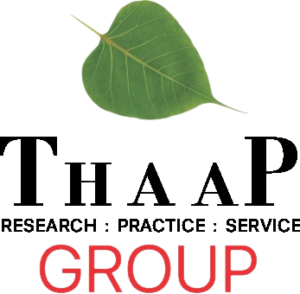TITLE: “PEOPLE AND THE CITY"
Life on Earth has followed an evolutionary trajectory and its story is one of survival through interaction with nature. This has its various shades of wresting food, contesting space, and the natural selection of genes with the twin results of adaptation and exploitation of nature. Part of the survival methodologies has been the clustering into groups, family, clan and tribe. There may be disagreement on the exact unfolding of the human drama but there has been a convergence towards efforts to sustain, rather than destroy, the nature-habitat.
Humans, over millennia, evolved a Mind with a unique consciousness and sense of self and its struggles. Human consciousness has enabled us as a species to recognize the evolutionary process, to understand it, and then to make an effort to move away from a state of unbridled competitive exploitation of nature and towards that of a life incorporating cooperation and compassion. Through human history, developments in science and art, and cities, are a manifestation of this conscious force of the human mind. The beginnings, growth and future of cities are part of this larger narrative of human evolution, and they continue to grow, change, and develop within that. Cities are the future, and it is for us to understand and mold their growth towards the objectives that we might collectively cherish. The city is both the physical body and the people who inhabit it.
Without people a city or town would be a soulless mass of infrastructure and debris. People make a city happen; they bring it forth, give it character, endow it with art and culture, fulfill aspirations and suffer frustrations, they can make it a place of joy, a thing of beauty which in turn gives them a sense of identity and pride. However, when a humane compassionate vision for that city is missing, and it happens all too often, the city generates unacceptable inequity, fierce and singular competition without cooperation, layered exclusivity rather than inclusion, violence in place of peace, and chaos in place of harmony. Cities grow and unfold through a process that might be called the ‘Interaction of the Social and Built Environment (ISBE)’. Cities are, at once, a physical and a cultural event. People construct cities, and the city, in turn, influences and modulates their living. This is the essence of urbanism. Private ownership of land, manipulation of prices and speculation therein for quick profit-making has been the main reason for the un-ending sprawl of the larger cities in Pakistan. State structures such as the Development Authorities and the Defence Housing Authorities have given an additional impetus to the get-rich-overnight frenzy that has begun to show in other aspects of the city life.
We can consciously develop a new set of design parameters for cities. Lives can be built around interactive communities that promote harmony rather than unbridled competition. Road networks can generate community safe spaces rather than streams of fast traffic or in contrast miles of traffic logjams which lead to road rages and frayed nerves. Do we have a role in understanding the city, and in furthering the dawn of the new city? This question is proposed as the theme for the THAAP Conference 2017. In response to the call-for-papers THAAP received 141 abstracts from 16 countries which showed both the reach of THAAP and the willingness and availability of scholars. A point of particular elation is that the large majority of the writers are young and will have long years of contribution to the society. One of the founding objectives of THAAP was to promote scholarship and research; after eight years of effort, we seem to be closing in on our aims.
EDITOR
Pervaiz Vandal
Contents
Pervaiz Vandal


